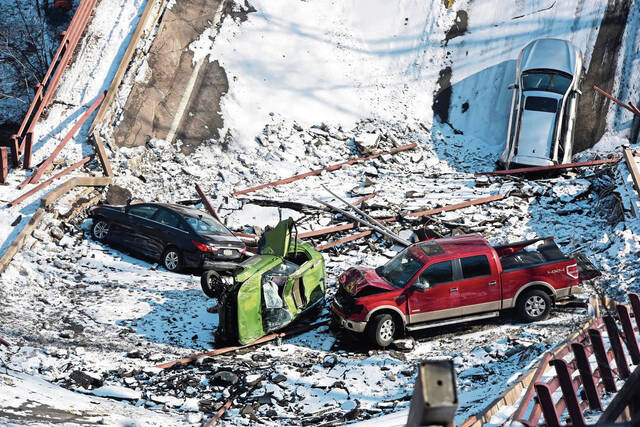Editorial: Pittsburgh's bridge report needs to create urgent timeline
When Pittsburgh makes a bridge a priority, exactly what does that mean?
In December, Mayor Ed Gainey released a comprehensive bridge report that assessed the spans that cross the city’s rivers, roads and valleys. The $1.5 million report was commissioned after the collapse of the poorly rated Fern Hollow Bridge in January 2022.
The report said 69 of the city’s more than 400 bridges had serious structural issues that should be handled within six months. Thirteen problems were so profound that they needed to be addressed within seven days.
Two months later, the city has only just made steps on the last three bridges.
The work on the Elizabeth Street Bridge — which had deteriorated pieces hanging over traffic — was completed Friday. A pedestrian ramp on Maple Street had been recommended to close until repairs were completed. That happened only last week.
On Oct. 31, the parking lot bridge at Woodruff Street and Saw Mill Run Boulevard was identified as able to “let loose and fall directly onto/into live traffic.” The city hopes to begin those repairs this week — four months later.
All of these issues are typical of the “hurry up and wait” attitude that is common with infrastructure repairs. The wheels of bureaucracy grind slowly when it comes to getting the work done.
It is understandable that, even when you know what needs to be done, there isn’t always funding available. But that doesn’t mean there aren’t low-cost solutions that can be taken quickly.
For example, how expensive is it to close a pedestrian bridge? It certainly doesn’t carry the multimillion-dollar price tag of a bridge repair or replacement. Why did it take months to accomplish that?
Gainey’s spokeswoman, Maria Montaño, addressed it in terms of the name given to the worst structures in the report: priority zeros.
“Some priority zeros are more severe than other priority zeros,” she said. “Not every priority zero is in danger of imminent failure.”
Except the report said that was something that could happen. And “could” is the operative word.
Bridges collapse for two reasons: unforeseen circumstances or neglect. The December report that put these bridges on a clock takes whatever happens with them out of the realm of unforeseen circumstances.
With a prioritized list of where the dangers lie, the city is obligated to do what needs to be done in the most timely manner.
Remove the ads from your TribLIVE reading experience but still support the journalists who create the content with TribLIVE Ad-Free.

